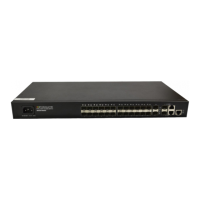Command Line Interface
Chapter 2. Command Line Interface
This chapter describes command line interface (CLI) which you may use to configure your
switch. It contains flowing sections:
Introduction of CLI
CLI mode
Feature and functions of CLI
Symbols in command
Parameters in command
2.1 Introduction of Command Line
Interface
Ethernet Switches provide a series of configuration commands and command line
interfaces for configuring and managing the Ethernet switch. The command line interface has
the following characteristics:
Local configuration via the Console port.
Local or remote configuration via Telnet.
Hierarchy command protection to avoid the unauthorized users accessing Ethernet switch.
Enter a “?” to get immediate online help.
Provide network testing commands, such as Tracert and Ping, to fast troubleshoot the
network.
Provide various detailed debugging information to help with network troubleshooting.
Log in and manage other Ethernet switch directly, using the Telnet command.
Provide FTP/TFTP/Xmodem service for the users to upload and download files.
The command line interpreter searches for target not fully matching the keywords. It is ok
for you to key in the whole keyword or part of it, as long as it is unique and not ambiguous.
2.2 Command Line Configuration Mode
Ethernet Switches provide hierarchy protection for the command lines to avoid
unauthorized user accessing illegally.
Commands are classified into three levels, namely visit and monitoring level, configuration
level and management level. They are introduced as follows:
Visit and monitoring level: Commands of this level involve command of network diagnosis

